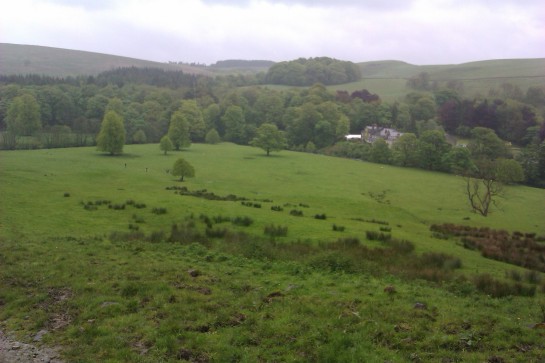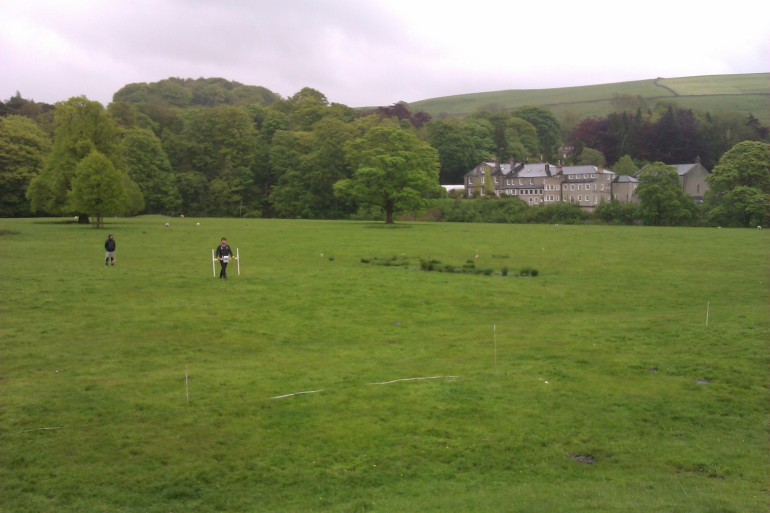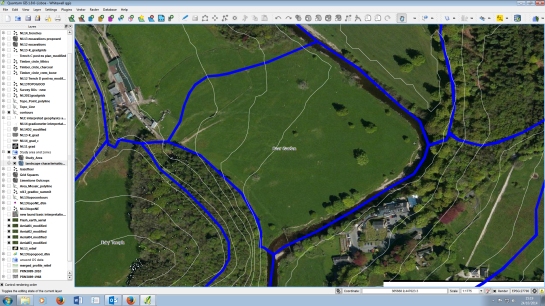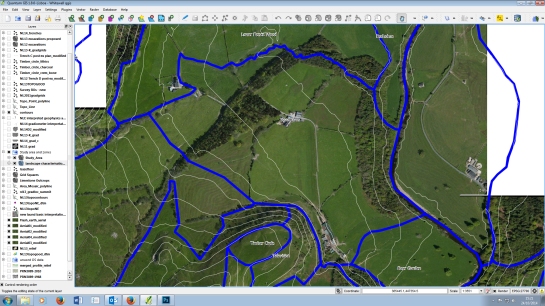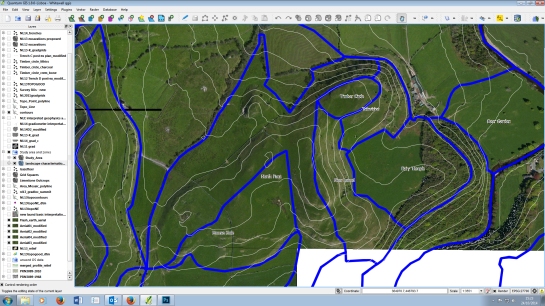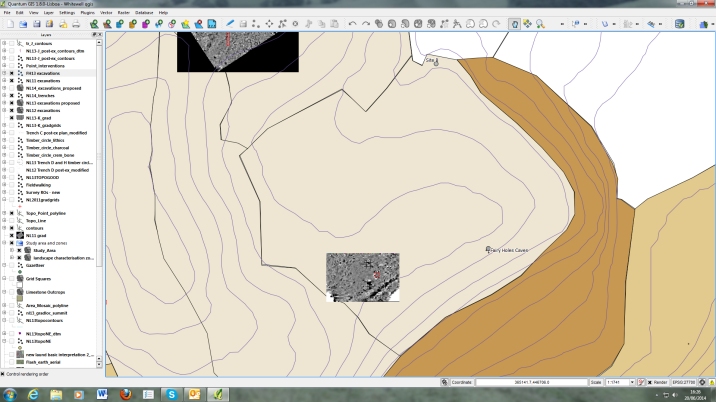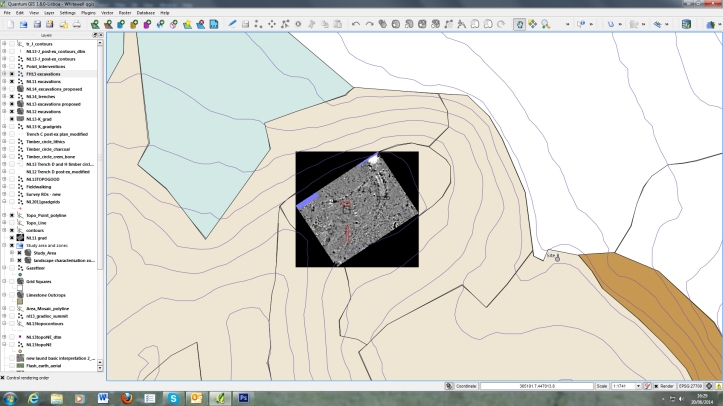Scott and James have started work today on what should be about a week’s gradiometer survey in the landscapes around New Laund Hill. The plan is for them to survey large chunks of the different slopes and elevations. This is hopefully going to provide them both with MSci dissertation topics as they investigate the prehistoric landscape around the known archaeology we have been excavating for the last few years.
They started down by the river, on the alluvial floodplain opposite the Inn at Whitewell. We’d chosen to do the survey this week because 1) all this year’s assessments are now finished (they are nearly all marked too) so we should all have a bit more time for research and 2) its bound to be sunny on the 1st of June isn’t it? This is the view down from New Laund farm towards the river plain, the small wet dots trudging backwards and forwards are James and Scott.
While they were doing the actual gradiometer work Clare and I were running around the farm ahead of them with the total station fixing the position of the survey onto the OS national grid. I’ve explained how the gradiometer works, to the best of my ability, before. As well as detecting the buried archaeology, we also need to be able to locate it on our maps of the area. The easiest way to do this is to make sure that the 30 x 30 m areas we survey have whole number national grid co-ordinates at the corners.
The weather was actually less miserable than forecast yesterday. It stayed dry until about 1.00 and the gales and heavy rain that Scott is battling into here only turned up about 3.00. Clare and I had it relatively lucky. We didn’t need to be non-magnetic to do our part of the job and so could wear proper waterproofs and boots.
Survey continues tomorrow – yellow warning of wind say the Met Office – and Dan, Mairead and I will also be sampling for pollen further up the hill as part of Dan’s MSci dissertation. Wildlife of the day was curlews, they whizz about the lower meadows on the farm in stupendous numbers, which kept almost crashing into Clare and I as we worked.
Rick

